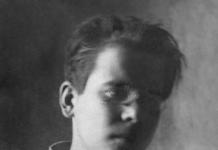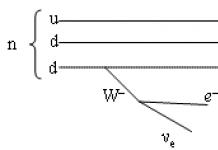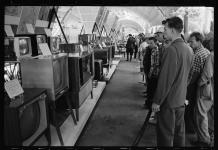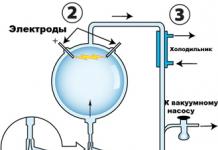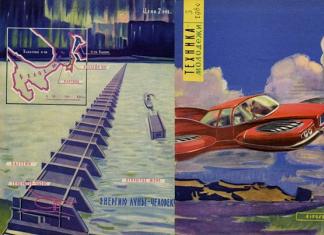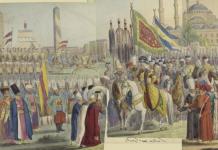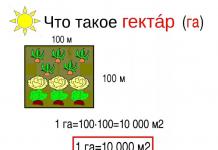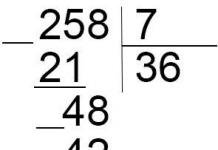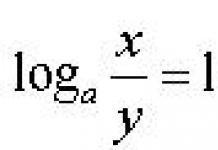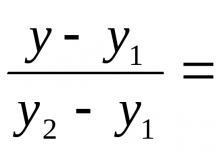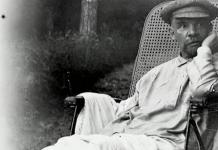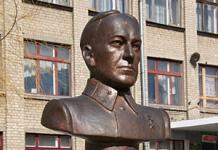English molecular biologist Francis Harri Compton Creek was born in Northampton and was the eldest of the two sons of Harry Compton Creek, a wealthy shoe manufacturer, and Anna Elizabeth (Wilkins) Creek. After spending his childhood in Northampton, he attended high school. During the post-World War I economic crisis, the family's business fell into disrepair and Crick's parents moved to London. As a student at Mill Hill School, Crick developed a keen interest in physics, chemistry, and mathematics. In 1934 he entered University College London to study physics and graduated three years later with a Bachelor of Science degree. While completing his studies at University College, Crick dealt with the viscosity of water at high temperatures; this work was interrupted in 1939 by the outbreak of the Second World War.
During the war years, Crick was engaged in the creation of mines in the research laboratory of the British Navy. For two years after the end of the war, he continued to work in this ministry and it was then that he read the famous book by Erwin Schrödinger “What is life? Physical aspects of a living cell "(" What Is Life? The Physical Aspects of the Living Cell "), published in 1944. In the book, Schrödinger asks:" How can spatio-temporal events occurring in a living organism be explained from the physics and chemistry? "
The ideas presented in the book influenced Crick so much that, intending to study particle physics, he switched to biology. With the support of Archibald W. Hill, Crick received a Medical Research Council Fellowship and in 1947 began working at the Strangway Laboratory in Cambridge. Here he studied biology, organic chemistry, and X-ray diffraction techniques used to determine the spatial structure of molecules. His knowledge of biology expanded significantly after moving in 1949 to the Cavendish Laboratory in Cambridge - one of the world's centers of molecular biology.
Under the leadership of Max Perutz, Crick investigated the molecular structure of proteins, in connection with which he developed an interest in the genetic code of the amino acid sequence in protein molecules. About 20 essential amino acids serve as the monomeric units of which all proteins are built. Studying the issue, which he defined as "the boundary between the living and the inanimate," Crick tried to find the chemical basis of genetics, which, he assumed, could be laid in deoxyribonucleic acid (DNA).
Genetics as a science arose in 1866, when Gregor Mendel formulated the position that "elements", later called genes, determine the inheritance of physical properties. Three years later, the Swiss biochemist Friedrich Miescher discovered nucleic acid and showed that it is contained in the cell nucleus. At the turn of the century, scientists discovered that genes are located on chromosomes, the building blocks of the cell nucleus. In the first half of the XX century. biochemists have determined the chemical nature of nucleic acids, and in the 40s. the researchers found that genes are formed by one of these acids, DNA. It has been shown that genes, or DNA, control the biosynthesis (or production) of cellular proteins called enzymes, and thus control the biochemical processes in the cell.
When Crick began working on his doctoral dissertation in Cambridge, it was already known that nucleic acids are composed of DNA and RNA (ribonucleic acid), each of which is formed by molecules of a monosaccharide of the pentose group (deoxyribose or ribose), phosphate and four nitrogenous bases - adenine, thymine , guanine and cytosine (RNA contains uracil instead of thymine). In 1950, Erwin Chargaff of Columbia University showed that DNA contains equal amounts of these nitrogenous bases. Maurice H.F. Wilkins and his colleague Rosalind Franklin of King's College, University of London carried out X-ray diffraction studies of DNA molecules and concluded that DNA has the shape of a double helix, reminiscent of a spiral staircase.
In 1951, the twenty-three-year-old American biologist James D. Watson invited Crick to work at the Cavendish Laboratory. Subsequently, they established close creative contacts. Building on early research by Chargaff, Wilkins, and Franklin, Crick and Watson set out to determine the chemical structure of DNA. Over the course of two years, they developed the spatial structure of the DNA molecule, constructing a model of it from balls, pieces of wire and cardboard. According to their model, DNA is a double helix, consisting of two chains of a monosaccharide and a phosphate (deoxyribose phosphate) connected by base pairs inside a helix, with adenine joining with thymine, and guanine with cytosine, and the bases with each other by hydrogen bonds.
The model allowed other researchers to clearly visualize DNA replication. Two chains of the molecule are separated at the places of hydrogen bonds like opening a zipper, after which a new one is synthesized on each half of the old DNA molecule. The base sequence acts as a template, or pattern, for a new molecule.
In 1953, Crick and Watson completed the creation of a DNA model. In the same year, Crick received his Ph.D. from Cambridge with a thesis on X-ray diffraction analysis of protein structure. Over the next year, he studied protein structure at Brooklyn Polytechnic Institute in New York and lectured at various US universities. Returning to Cambridge in 1954, he continued his research at the Cavendish Laboratory, focusing on deciphering the genetic code. Originally a theorist, Crick began with Sydney Brenner to study genetic mutations in bacteriophages (viruses that infect bacterial cells).
By 1961, three types of RNA were discovered: informational, ribosomal, and transport. Crick and colleagues have proposed a way to read the genetic code. According to Crick's theory, messenger RNA receives genetic information from DNA in the cell nucleus and transfers it to ribosomes (protein synthesis sites) in the cell's cytoplasm. Transport RNA transfers amino acids to the ribosomes.
Informational and ribosomal RNA interact with each other to ensure that amino acids are combined to form protein molecules in the correct sequence. The genetic code is made up of triplets of nitrogenous bases of DNA and RNA for each of the 20 amino acids. Genes are composed of numerous basic triplets, which Crick called codons; the codons are the same in different species.
Crick, Wilkins and Watson shared the 1962 Nobel Prize in Physiology or Medicine "for discoveries concerning the molecular structure of nucleic acids and their importance for the transmission of information in living systems." AV Engström from the Karolinska Institute said at the award ceremony: "The discovery of the spatial molecular structure ... DNA is extremely important, as it outlines the possibilities for understanding in the smallest detail the general and individual characteristics of all living things." Engström noted that "deciphering the double helical structure of deoxyribonucleic acid with a specific pairing of nitrogenous bases opens up fantastic opportunities for unraveling the details of control and transmission of genetic information."
In the year he received the Nobel Prize, Crick became the head of the biological laboratory at the University of Cambridge and a foreign member of the Council of the Salk Institute in San Diego, California. In 1977 he moved to San Diego, receiving an invitation to become a professor. At the Solkovo Institute, Crick conducted research in the field of neurobiology, in particular, he studied the mechanisms of vision and dreams. In 1983, together with the English mathematician Graham Mitchison, he suggested that dreams are a side effect of the process by which the human brain is freed from excessive or useless associations accumulated during wakefulness. Scientists have hypothesized that this form of "reverse learning" exists to prevent overloading of nervous processes.
In Life Itself: Its Origin and Nature (1981), Crick noted the striking similarities between all forms of life. "With the exception of mitochondria," he wrote, "the genetic code is identical in all living objects studied at the present time." Referring to discoveries in molecular biology, paleontology, and cosmology, he suggested that life on Earth could have originated from microorganisms that were scattered throughout space from another planet; this theory he and his colleague Leslie Orgel called "direct panspermia."
In 1940, Crick married Ruth Doreen Dodd; they had a son. They divorced in 1947, and two years later, Crick married Odile Speed. They had two daughters.
Crick's numerous awards include the Charles Leopold Meier Prize of the French Academy of Sciences (1961), the American Research Society's Science Prize (1962), the Royal Medal (1972), and the Royal Society's Copley Medal (1976). Creek is an honorary member of the Royal Society of London, the Royal Society of Edinburgh, the Royal Irish Academy, the American Association for the Advancement of Sciences, the American Academy of Arts and Sciences and the American National Academy of Sciences.
Work in biology
Romanova Anastasia
Francis Creek
James watson
"Discovery of the secondary structure of DNA"
The beginning of this story can be taken as a joke. "And we just discovered the secret of life!" - said one of the two men who entered the Cambridge Eagle pub exactly 57 years ago - on February 28, 1953. And these people working in a nearby laboratory were not exaggerating in the least. One of them was named Francis Creek, and the other was James Watson.
Biography:
Francis Creek
During the war years, Crick was engaged in the creation of mines in the research laboratory of the British Navy. For two years after the end of the war, he continued to work in this ministry and it was then that he read the famous book by Erwin Schrödinger “What is life? Physical aspects of a living cell ”, published in 1944. In the book, Schrödinger asks the question: "How can spatio-temporal events occurring in a living organism be explained from the standpoint of physics and chemistry?"
The ideas presented in the book influenced Crick so much that, intending to study particle physics, he switched to biology. With the support of Will Crick, he received a Medical Research Council Fellowship and in 1947 began working at the Strangway Laboratory in Cambridge. Here he studied biology, organic chemistry, and X-ray diffraction techniques used to determine the spatial structure of molecules.
James Deway Watson
In Chicago, he received his primary and secondary education. It soon became apparent that James was an unusually gifted child, and he was invited to the radio to participate in the Kids Quiz program. After only two years in high school, Watson received a scholarship in 1943 to study at an experimental four-year college at the University of Chicago, where he showed an interest in the study of ornithology. After becoming a Bachelor of Science from the University of Chicago in 1947, he continued his education at Indiana University Bloomington.
By this time, Watson had become interested in genetics and began training in Indiana under the guidance of Herman J. Möller, a specialist in this field, and Salvador Luria, a bacteriologist. Watson wrote a dissertation on the effect of X-rays on the multiplication of bacteriophages (viruses that infect bacteria) and received his Ph.D. in 1950. A grant from the National Research Society allowed him to continue research on bacteriophages at the University of Copenhagen in Denmark. There he conducted a study of the biochemical properties of bacteriophage DNA. However, as he later recalled, experiments with the phage began to weigh on him, he wanted to know more about the true structure of DNA molecules, about which geneticists talked so enthusiastically.
In October 1951 year, the scientist went to the Cavendish Laboratory at Cambridge University to study the spatial structure of proteins together with Kendrew. There he met Francis Crick, (a physicist with an interest in biology), who was writing his doctoral dissertation at the time.
Subsequently, they established close creative contacts. “It was intellectual love at first sight,” says one historian of science. Despite their common interests, outlook on life and style of thinking, Watson and Crick criticized each other mercilessly, albeit politely. Their roles in this intellectual duo were different. “Francis was the brain and I was the feeling,” says Watson
Beginning in 1952, based on early research by Chargaff, Wilkins, and Franklin, Crick and Watson decided to try to determine the chemical structure of DNA.
By the fifties, it was known that DNA is a large molecule consisting of nucleotides interconnected in a line. Scientists also knew that it is DNA that is responsible for storing and inheriting genetic information. The spatial structure of this molecule and the mechanisms by which DNA is inherited from cell to cell and from organism to organism remained unknown.
V 1948 Linus Pauling discovered the spatial structure of other macromolecules - proteins. Pauling, bedridden by jade, spent several hours folding paper, which he used to model the configuration of a protein molecule, and created a model of a structure called the "alpha helix".
After this discovery, the spiral DNA hypothesis was popular in their laboratory, Watson said. Watson and Crick collaborated with leading experts in X-ray structural analysis, and Crick was able to almost accurately detect the signs of a spiral in the images obtained in this way.
Pauling also believed that DNA is a spiral, moreover, consisting of three strands. However, he could not explain either the nature of such a structure, or the mechanisms of DNA self-doubling for transmission to daughter cells.
The discovery of the double-stranded structure came after Maurice Wilkins secretly showed Watson and Crick an X-ray of a DNA molecule taken by his collaborator Rosalind Franklin. In this picture, they clearly recognized the signs of a spiral and went to the laboratory to check everything on the 3D model.
In the laboratory, it turned out that the workshop did not supply the metal plates necessary for the stereo model, and Watson cut out four types of nucleotide layouts from cardboard - guanine (G), cytosine (C), thymine (T) and adenine (A) - and began to lay them out on the table ... And then he discovered that adenine combines with thymine, and guanine with cytosine according to the "key-lock" principle. This is how the two strands of the DNA helix are connected to each other, that is, opposite the thymine from one strand there will always be adenine from the other, and nothing else.
Over the next eight months, Watson and Crick summarized their findings with those already available, making a report on the structure of DNA in February. 1953 of the year.
A month later, they created a 3D model of a DNA molecule made from balls, pieces of cardboard and wire.
According to the Crick-Watson model, DNA is a double helix made up of two deoxyribose phosphate chains linked by base pairs in a manner similar to the rungs of a ladder. Through hydrogen bonds, adenine combines with thymine, and guanine with cytosine.
Can be swapped:
a) the participants of this pair;
b) any pair to another pair, and this will not lead to a violation of the structure, although it will decisively affect its biological activity.

The structure of DNA, proposed by Watson and Crick, perfectly satisfied the main criterion, the fulfillment of which was necessary for a molecule that claims to be a repository of hereditary information. “The backbone of our model is highly ordered, and the sequence of base pairs is the only property that can ensure the transfer of genetic information,” they wrote.
"Our structure," wrote Watson and Crick, "thus consists of two chains, each of which is complementary to the other."
Watson wrote about the discovery to his boss Delbrück, who wrote to Niels Bohr: “Amazing things happen in biology. I think Jim Watson made a discovery comparable to what Rutherford made in 1911. " It is worth recalling that in 1911 Rutherford discovered the atomic nucleus.
This arrangement made it possible to explain the mechanisms of DNA copying: two strands of the helix diverge, and to each of them an exact copy of its former "partner" along the spiral is completed from nucleotides. By the same principle as the positive is printed from the negative in the photograph.
Although Rosalind Franklin did not support the hypothesis of the spiral structure of DNA, it was her images that played a decisive role in the discovery of Watson and Crick.
Later, the model of the structure of DNA proposed by Watson and Crick was proved. And in 1962 their work was awarded the Nobel Prize in Physiology or Medicine "for discoveries in the field of the molecular structure of nucleic acids and for determining their role in the transmission of information in living matter." Rosalind Franklin, who had died by that time (from cancer in 1958), was not among the laureates, since the prize is not awarded posthumously.
He from the Karolinska Institute said at the award ceremony: "The discovery of the spatial molecular structure of DNA is extremely important, because it outlines the possibilities for understanding in the smallest detail the general and individual characteristics of all living things." Engström noted that "the deciphering of the double helical structure of deoxyribonucleic acid with a specific pairing of nitrogenous bases opens up fantastic possibilities for unraveling the details of the control and transmission of genetic information."
https://pandia.ru/text/78/209/images/image004_142.jpg "width =" 624 "height =" 631 src = ">

The discovery of the existence of a duplicated DNA helix proved to be a watershed moment in biology. It was made by the Englishman Francis Crick and the American James Watson. In 1962, scientists were awarded the Nobel Prize.
They are among the smartest people on the planet. Crick made many discoveries in various fields, not limited to genetics. Watson has earned himself a notoriety for a number of statements, but this characterizes him more as an extraordinary person.
Childhood
Francis Crick was born in 1916 in Northampton, England. His father was a successful businessman and owned a shoe factory. He went to a regular high school. After the war, the family's income was significantly reduced, the head decided to transfer the family to London. Francis graduated from Mill Hill School, where he was fond of mathematics, physics and chemistry. He later attended University College London and is recognized as a Bachelor of Science degree.
Then, on another continent, his future colleague, James Watson, was born. Since childhood, he was different from ordinary children, even then they predicted a bright future for James. He was born in Chicago in 1928. His parents surrounded him with love and joy.
The teacher in the first grade noted his intelligence was inappropriate for his age. After the 3rd grade, he took part in an intellectual quiz for children on the radio. Watson showed amazing ability. Later he was invited to the four-year University of Chicago, where he became interested in ornithology. Having a bachelor's degree, the young man decides to continue his studies at the University of Bloomington in Indiana.
Interest in science
At Indiana University, Watson is engaged in genetics and comes to the attention of the biologist Salvador Lauria and the brilliant geneticist J. Moeller. The collaboration resulted in a dissertation on the effect of X-rays on bacteria and viruses. After a brilliant defense, James Watson becomes a Ph.D.
Further research on bacteriophages will take place in distant Denmark - the University of Copenhagen. The scientist is actively working on compiling a DNA model and studying its properties. His colleague is the talented biochemist Herman Kalkarom. However, the fateful meeting with Francis Crick will take place at the University of Cambridge. The aspiring scientist Watson, who is only 23 years old, will invite Francis to his laboratory to work together.

Before World War II, Crick studied the viscosity of water in various states. Later he had to work for the Ministry of the Navy - he develops mines. The turning point will be the reading of the book by E. Schrödinger. The author's ideas pushed Francis to study biology. Since 1947 he has been working in the Cambridge Laboratory, studying X-ray diffraction, organic chemistry and biology. Its leader was Max Perutz, who studies the structure of proteins. Crick takes an interest in defining the chemical basis of the genetic code.
DNA decoding
In the spring of 1951, a symposium was held in Naples, where James meets the English scientist Maurice Wilkins and the researcher Rosalyn Franklin, who also conduct DNA analysis. They determined that the structure of the cell is similar to a spiral staircase - it has a double spiral shape. Their experimental data pushed Watson and Crick to further research. They decide to determine the composition of the nucleic acids and seek the necessary funding - a grant from the National Society for the Study of Infantile Paralysis.
 James watson
James watson In 1953, they will inform the world about the structure of DNA and present a finished model of the molecule.
In just 8 months, two brilliant scientists will summarize the results of their experiments with the available data. In a month, a three-dimensional model of DNA will be made from balls and cardboard.
The discovery was announced by the director of the Cavendish laboratory, Laurence Bragg, at a Belgian conference on April 8. But the importance of the discovery was not immediately recognized. Only on April 25, after the publication of the article in the scientific journal "Nature", biologists and other laureates appreciated the value of new knowledge. The event was attributed to the greatest discovery of the century.

In 1962, the British Wilkins and Creek with the American Watson were nominated for the Nobel Prize in Medicine. Unfortunately, Rosalind Franklin passed away 4 years ago and was not included in the list of applicants. In this regard, there was a loud scandal, since the model used data from Franklin's experiments, although she did not give official permission. Crick and Watson worked closely with her partner Wilkins, and Rosalind herself did not learn the importance of her experiments for medicine until the end of her life.
A monument to Watson was erected in New York for the opening. Wilkins and Creek did not receive this honor, since they did not have American citizenship.
Career
After the discovery of the structure of DNA, the paths of Watson and Crick diverge. James becomes a senior fellow in the Department of Biology at the University of California, and later a professor. In 1969 he was offered to head the Long Island Laboratory of Molecular Biology. The scientist refuses to work at Harvard, where he worked since 1956. The rest of his life he will devote to neurobiology, the study of the effects of viruses and DNA on cancer. Under the leadership of the scientist, the laboratory reached a new level of research quality, its funding increased significantly. Gold Spring Harbor has become the world's premier center for the study of molecular biology. From 1988 to 1992, Watson was actively involved in a number of projects to study the human genome.
Crick, after world recognition, becomes the head of the biological laboratory in Cambridge. In 1977 he moved to San Diego, California to study the mechanisms of dreams and vision.
 Francis Creek
Francis Creek In 1983, with the mathematician Gr. Mitchison, he suggested that dreams are the ability of the brain to free itself from useless and excessive associations that have been accumulated during the day. Scientists have called dreams prevention of nervous system overload.
In 1981, the book by Francis Crick "Life as it is: its origin and nature" was published, where the author suggests the origin of life on Earth. According to his version, the first inhabitants on the planet were microorganisms from other space objects. This explains the similarity of the genetic code of all living objects. The scientist died in 2004 from oncology. He was cremated, and his ashes were scattered over the Pacific Ocean.
 Francis Creek
Francis Creek In 2004, Watson became rector, but in 2007 he had to leave this position for speaking out about the genetic connection between origin (race) and the level of intelligence. A scientist who likes provocative and offensive comments on the work of his colleagues, Franklin was no exception. Some of the statements were taken as attacks on obese people and homosexuals.
In 2007, Watson published his autobiography Avoid the Tediousness. In 2008 he gave a public lecture at Moscow State University. Watson is called the first person with a completely sequenced genome. The scientist is currently working to find genes responsible for mental illness.
Crick and Watson opened up new possibilities for the development of medicine. It is impossible to overestimate the significance of their scientific activities.
The relevance and reliability of information is important to us. If you find an error or inaccuracy, please let us know. Highlight the error and press the keyboard shortcut Ctrl + Enter .
English physicist (by education), Nobel Prize Laureate in Physiology or Medicine for 1962 (jointly with James Watson and Maurice Wilkins) with the formulation: "for their discovery of the molecular structure of nucleic acids and its significance in the transmission of information in living matter."
During World War II he worked at the Admiralty, where he developed magnetic and acoustic mines for the British Navy.
In 1946 Francis Creek read the book Erwin Schrödinger: What is life from the point of view of physics? and decided to leave research in the field of physics and deal with problems of biology. He later wrote that in order to move from physics to biology, one must "almost be reborn".
In 1947 Francis Creek left the Admiralty, and at about the same time Linus Pauling put forward the hypothesis that the diffraction pattern of proteins was determined by alpha-helices wrapped around one another.
Francis Crick was interested in two fundamental unsolved problems in biology:
- How do molecules allow you to make the transition from non-living to living?
- how does the brain carry out thinking?
In 1951 Francis Creek met with James Watson and together in 1953 they turned to the analysis of the structure of DNA.
"Career F. Crick cannot be called fast and bright. At thirty-five, he is still not received PhD status (PhD roughly corresponds to the title of Candidate of Sciences - Approx. I.L. Vikentiev).
German bombs destroyed a laboratory in London where he was supposed to measure the viscosity of warm water under pressure.
Crick was not very upset that his career in physics was at a standstill. Biology had attracted him before, so he quickly found a job in Cambridge, where his topic was measuring the viscosity of the cytoplasm of cells. In addition, he studied crystallography at the Cavendish.
But Crick lacked the patience to successfully develop his scientific ideas, nor the proper diligence in order to develop those of others. His constant mockery of others, disregard for his own career, combined with self-confidence and a habit of giving advice to others, annoyed his Cavendish colleagues.
But Crick himself was not happy with the scientific focus of the laboratory, which focused exclusively on proteins. He was sure the search was going in the wrong direction. The secret of genes is not hidden in proteins, but in DNA. Seduced by ideas Watson, he abandoned his own research and focused on the study of the DNA molecule.
This is how the great duo of two friendly rival talents emerged: a young, ambitious American with a little biology, and a bright-minded but unassembled thirty-five-year-old Briton with a grasp of physics.
The combination of the two opposites caused an exothermic reaction.
Within a few months, having gathered together their own and previously obtained by others, but not processed data, the two scientists came close to the greatest discovery in the entire history of mankind - deciphering the structure of DNA. […]
But there was no mistake.
Everything turned out to be extremely simple: DNA contains a code written along its entire molecule - an elegantly elongated double helix that can be arbitrarily long.
The code is copied due to the chemical affinity between the constituent chemical compounds - the letters of the code. The letter combinations represent the text of the protein molecule, written in a still unknown code. The simplicity and elegance of the DNA structure was stunning.
Later Richard Dawkins wrote: "What was truly revolutionary in the era of molecular biology that followed the discovery of Watson and Crick was that the code for life was digitized into an incredibly similar to computer program."
Matt Ridley, Genome: The Autobiography of a Species in 23 Chapters, M., Exmo, 2009, pp. 69-71.
After analyzing the received Maurice Wilkins data on X-ray scattering on DNA crystals, Francis Creek together with James Watson built in 1953 a model of the three-dimensional structure of this molecule, called the "Watson-Crick Model".
Francis Creek wrote to his son in 1953 proud: “ Jim Watson and I made what was perhaps the most important discovery ... Now we are convinced that DNA is a code. Thus, the sequence of bases ("letters") makes one gene different from another (just as different pages of printed text differ from one another). You can imagine how Nature makes copies of genes: if two chains are weaved into two separate chains, each chain will attach another chain, then A will always be with T, and G with C, and we will get two copies instead of one. In other words, we think we have found the underlying mechanism by which life arises from life ... You can understand how excited we are. "
Quoted in Matt Ridley, Life Is a Discrete Code, in Collected Works: Theory of Everything / Ed. John Brockman, M., Binom; Knowledge Laboratory, 2016, p. eleven.
Exactly Francis Creek in 1958 "... with formulated the "central dogma of molecular biology" according to which the transmission of hereditary information goes only in one direction, namely from DNA to RNA and from RNA to protein
.
Its meaning is that the genetic information recorded in DNA is realized in the form of proteins, but not directly, but with the help of a related polymer - ribonucleic acid (RNA), and this path from nucleic acids to proteins is irreversible. Thus, DNA is synthesized on DNA, providing its own reduplication, i.e. reproduction of the original genetic material in generations. RNA is also synthesized on DNA, resulting in the rewriting (transcriptions) of genetic information in the form of multiple copies of RNA. RNA molecules serve as templates for protein synthesis - genetic information is translated into the form of polypeptide chains. "
Gnatik E.N., Man and his perspectives in the light of anthropogenetics: philosophical analysis, M., Publishing house of the Peoples' Friendship University of Russia, 2005, p. 71.
“In 1994, the book, which caused a wide resonance, was published Francis Crick“An amazing hypothesis. Scientific search for the soul ”.
Crick is skeptical about philosophers and philosophy in general, considering their abstract reasoning to be fruitless. Nobel Prize Winner for DNA Decoding (with J. Watson and M. Wilkins), he set himself the following task: to decipher the nature of consciousness on the basis of specific facts of the brain.
By and large, he is not worried about the question "what is consciousness?", But how the brain produces it.
He says: "You, your joys and sorrows, your memories and ambitions, your sense of identity and free will are really no more than the behavior of a huge community of nerve cells and their interacting molecules."
Most of all, Crick is concerned with the question: what is the nature of the structures and patterns that ensure the connection and unity of the conscious act ("the binding problem")?
Why are the very different stimuli received by the brain interconnected in such a way that they ultimately produce a unified experience, for example, the image of a walking cat?
It is in the nature of the brain connections, he believes, that one should look for an explanation of the phenomenon of consciousness.
The “amazing hypothesis”, in fact, is that the key to understanding the nature of consciousness and its qualitative images may be the synchronized flashes of neurons recorded in experiments in the range from 35
before 40
Hertz in the networks connecting the thalamus with the cerebral cortex.
Naturally, both philosophers and cognitive scientists doubted that from the vibrations of nerve fibers, possibly really associated with the manifestation of phenomenal features of experience, it is possible to build hypotheses about consciousness and its cognitive thinking processes. "
Yudina N.S., Consciousness, physicalism, science, in Sat: The problem of consciousness in philosophy and science / Ed. DI. Dubrovsky, M., "Canon +", 2009, p. 93.
Creek Francis Harri Compton was one of two molecular biologists who unraveled the mystery of the structure of the genetic information carrier (DNA), thus laying the foundation for modern molecular biology. Following this fundamental discovery, he made significant contributions to understanding the genetic code and how genes work, as well as to neuroscience. Shared the 1962 Nobel Prize in Medicine with James Watson and Maurice Wilkins for elucidating the structure of DNA.
Francis Crick: biography
The eldest of two sons, Francis, was born to Harry Crick and Elizabeth Ann Wilkins on June 8, 1916 in Northampton, England. He studied at a local gymnasium and at an early age was carried away by experiments, often accompanied by chemical explosions. At school, he received a prize for collecting wildflowers. In addition, he was obsessed with tennis, but had little interest in other games and sports. At the age of 14, Francis received a Mill Hill School Scholarship in North London. Four years later, at 18, he entered university college. By the time he came of age, his parents had moved from Northampton to Mill Hill, and this allowed Francis to live at home while studying. He received an honors degree in physics.
After undergraduate studies, Francis Crick, under the guidance of da Costa Andrade at the University College, studied the viscosity of water under pressure and at high temperatures. In 1940, Francis received a civilian position in the Admiralty, where he worked on the design of anti-ship mines. Crick married Ruth Doreen Dodd earlier in the year. Their son Michael was born during an air raid on London on 25 November 1940. Towards the end of the war, Francis was assigned to scientific intelligence at the headquarters of the British Admiralty in Whitehall, where he was engaged in the development of weapons.
On the verge of living and non-living
Realizing that he would need additional training in order to satisfy his desire to do basic research, Crick decided to work on his advanced degree. According to him, he was fascinated by two areas of biology - the border between living and nonliving and the activity of the brain. Crick chose the first, despite knowing little about the subject. After preliminary studies at university college in 1947, he settled on a program in a laboratory in Cambridge under the direction of Arthur Hughes, concerning work on the physical properties of the cytoplasm of the culture of chicken fibroblasts.

Two years later, Crick joined the Medical Research Council group at the Cavendish Laboratory. It included British academicians Max Perutz and John Kendrew (future Nobel laureates). Francis began to collaborate with them, ostensibly to study the structure of the protein, but in reality to work with Watson to unravel the structure of DNA.
Double helix
In 1947, Francis Crick divorced Doreen and in 1949 married Odile Speed, an art student he met while serving in the Navy during his service at the Admiralty. Their marriage coincided with the beginning of his Ph.D. work in X-ray diffractometry of proteins. This is a method for studying the crystalline structure of molecules, which makes it possible to determine the elements of their three-dimensional structure.
In 1941, the Cavendish Laboratory was run by Sir William Lawrence Bragg, who pioneered the X-ray diffraction technique forty years ago. In 1951, Crick was joined by James Watson, a visiting American who studied with the Italian physician Salvador Edward Luria and was a member of a group of physicists who studied bacterial viruses known as bacteriophages.

Like his colleagues, Watson was interested in uncovering the composition of genes and thought that unraveling the structure of DNA was the most promising solution. The informal partnership between Crick and Watson developed through similar ambitions and similar thought processes. Their experiences complemented each other. By the time they first met, Crick knew a lot about X-ray diffraction and protein structure, and Watson was well aware of bacteriophages and bacterial genetics.
Franklin data
Francis Crick and were aware of the work of the biochemists Maurice Wilkins and King's College London, who used X-ray diffraction to study the structure of DNA. Crick, in particular, encouraged the London group to build models similar to those done in the United States to solve the problem of the alpha-helix of a protein. Pauling, the father of the concept of chemical bonding, showed that proteins have a three-dimensional structure and are not just linear chains of amino acids.

Wilkins and Franklin, acting independently, preferred a more deliberate experimental approach to the theoretical, modeling Pauling method followed by Francis. Since the group at King's College did not respond to their suggestions, Crick and Watson devoted part of the two-year period to discussion and reasoning. In early 1953, they began building DNA models.
DNA structure
Using Franklin's X-ray diffraction data, through much trial and error, they created a model of the deoxyribonucleic acid molecule that matched the findings of the London group and the data of biochemist Erwin Chargaff. In 1950, the latter demonstrated that the relative amount of four nucleotides that make up DNA follows certain rules, one of which was the correspondence of the amount of adenine (A) to the amount of thymine (T) and the amount of guanine (G) to the amount of cytosine (C). Such a connection suggests that A and T and G and C are paired, refuting the idea that DNA is nothing more than a tetranucleotide, that is, a simple molecule consisting of all four bases.
In the spring and summer of 1953, Watson and Crick wrote four papers on the structure and putative functions of deoxyribonucleic acid, the first of which appeared on April 25 in the journal Nature. The publications were accompanied by the work of Wilkins, Franklin and their colleagues, who presented experimental evidence of the model. Watson won the coin toss and put his last name first, thus permanently linking the fundamental scientific achievement to the Watson Creek couple.
Genetic code
Over the next few years, Francis Crick studied the relationship between DNA and his collaboration with Vernon Ingram led to the demonstration in 1956 of the difference in the hemoglobin composition of sickle cell anemia from normal by one amino acid. The study provided evidence that genetic diseases may be associated with a DNA-protein relationship.

Around this time, South African geneticist and molecular biologist Sydney Brenner joined Crick at the Cavendish Laboratory. They began to tackle the "coding problem" —determining how the DNA base sequence forms the amino acid sequence in a protein. The work was first presented in 1957 under the title "On Protein Synthesis". In it, Crick formulated the basic postulate of molecular biology, according to which information transferred to a protein can no longer be returned. He predicted the mechanism of protein synthesis by transferring information from DNA to RNA and from RNA to protein.
Salk Institute
In 1976, while on vacation, Crick was offered a permanent position at the Salk Institute for Biological Research in La Jolla, California. He agreed and worked for the rest of his life at the Salk Institute, including as a director. Here Crick began to study the functioning of the brain, which interested him from the very beginning of his scientific career. He was mainly concerned with consciousness and tried to approach this problem through the study of vision. Crick published several speculative works on the mechanisms of dreams and attention, but, as he wrote in his autobiography, he still had to come up with some theory that would be both new and convincingly explain many experimental facts.

An interesting episode of activity at the Salk Institute was the development of his idea of "directed panspermia". Together with Leslie Orgel, he published a book in which he suggested that microbes soared in outer space in order to eventually reach the Earth and seed it, and that this was done as a result of the actions of "someone." This is how Francis Crick refuted the theory of creationism by demonstrating how speculative ideas could be presented.
Scientist awards
During his career as an energetic theorist of modern biology, Francis Crick collected, improved, and synthesized experimental work of others and brought his unusual conclusions to the solution of fundamental problems of science. His extraordinary efforts, in addition to the Nobel Prize, have earned him many awards. These include the Lasker Prize, the Charles Meier Prize of the French Academy of Sciences and the Royal Copley Medal. In 1991 he was admitted to the Order of Merit.
Crick died on July 28, 2004 in San Diego at the age of 88. In 2016, the Francis Crick Institute was built in north London. The £ 660 million building has become the largest biomedical research center in Europe.


